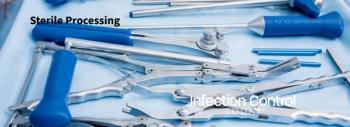
Severe Inner-Ear Surgery Complications Mitigated with Antibiotic Therapy
Newswise -- When ear infections fail to resolve with medical therapy, surgery on the eardrum, middle ear, and mastoid bone, which sits behind the ear canal, is often necessary. The internal portion of the mastoid bone houses the delicate hearing and balance components of the inner ear. Mastoid surgery may, in unusual circumstances, result in an injury to the semicircular (balance) canal, a serious complication because of its resulting deafness and dizziness. Although a semicircular canal can be removed without compromising hearing, this is usually accomplished in temporal bones without significant inflammation. Semicircular canal injuries occur most often in the presence of chronic middle ear infection, exposing the inner ear to bacterial toxins and the host inflammatory response. Pseudomonas aeruginosa and more specifically its exotoxin A has been implicated in the cause of infection-related hearing loss. Surgeons commonly offer antibiotics and/or steroids to patients found to have a semicircular canal opening during mastoidectomy for chronic suppurative otitis media. This is done with the hope that it will decrease the infectious or inflammatory response and prevent spread of infection to the central nervous system.
Paradoxically, administration of antibiotics can aggravate the inflammatory response in otitis media while steroids can weaken the middle ear inflammatory response. Similarly, steroids can minimize cochlear sequelae from antibiotic therapy of meningitis. A previous study demonstrated that the harmful effects of exotoxin A on hearing can be diminished by administration of a steroid, but these benefits have not been demonstrated in a model of semicircular canal injury.
A new study from the University of Florida sets out to evaluate the impact of prophylactic antibiotic and steroid administration on hearing loss resulting from SC transection in an animal model of PA otitis media (OM). The authors of "Antibiotic and Steroid Prophylaxis for Hearing Loss Secondary to Semicircular Canal Transection in Pseudomonas Otitis Media," are James C. Lee, Rahim A. Remtulla, Gary R. Stevens PhD, Mei Zhang M.D PhD, and Patrick J. Antonelli MD, from the university's Departments of Otolaryngology and Biostatistics. Their results will be presented at the Association for Research in Otolaryngology's mid-winter meeting, Feb. 22-26, 2004, in Daytona Beach, Fla.
Sixty-four guinea pigs (pigmented American short hair, 400-700g, both male and female), all free of external and middle ear pathology were used in this study. Two experiments were conducted in sequence. In both experiments, bilateral otitis media was induced in all animals by transtympanic injection of pseudomonas aeruginosa. Two to four days after injection, animals were subjected to unilateral semicircular transection. The contralateral ear of each animal served as an internal control, representing the hearing loss caused by the otitis media without semicircular canal transection. In the first experiment, antibiotics were initiated prior to the transection (i.e., prophylactic) in half the animals; antibiotics were started after the surgery in the remaining animals. In Experiment 2, animals were randomly assigned to receive prophylactic antibiotics alone or prophylactic antibiotics with steroids. Auditory testing was done before semicircular transection and immediately prior to sacrifice, 12 days after surgery.
Otitis media developed in all ears in both experiments. Intraoperative cultures yielded PA in all ears. No other bacteria were isolated from the middle ears. Both experiments were complicated by postoperative deaths. Ten of 32 animals died in the first series, with five being lost from each group. Seven of 32 animals died in the second series, with six being lost from the antibiotic + steroid group and one in the antibiotic only group. All animals either died during recovery from anesthesia or the first postoperative night. Necropsies revealed disseminated PA infection, primarily pneumonia, as the cause of death in all animals.
The goal of this study was to determine if prophylactic antibiotic and steroid administration could minimize the risk or severity of hearing loss resulting from SC transection in the presence of PA OM. A significant improvement in mean thresholds to click stimuli was observed with administration of antibiotics before SC transection compared with administration after SC transection. As PA is the predominant organism in chronic suppurative otitis media in humans, this suggests that the risk or severity of cochlear sequelae secondary to SC injury in human chronic suppurative otitis media may be reduced by the use of prophylactic antibiotics directed at PA.
The second objective was to determine if the risk of hearing loss could be further reduced by the addition of prophylactic steroids. Although improved thresholds were seen in the semicircular transected ear of animals receiving prophylactic steroids in conjunction with antibiotics, relative to prophylactic antibiotics alone, this difference was not significant.
The study concludes that hearing loss due to semicircular canal transection in the presence of otitis media may be diminished with prophylactic antibiotic therapy in the guinea pig model. Prophylactic steroids do not significantly enhance the benefits observed with prophylactic antibiotic administration in this animal model.
Although semicircular canal violation is uncommon, the seriousness of this complication could be mitigated if the consequence of profound hearing loss and dizziness could be prevented. "Dead ears" (i.e., deaf ears) have been reported as a surgical complication in 2 percent to 3 percent of mastoid procedures, and this rate is higher for less experienced surgeons. To the researchers' knowledge, no prior study has reported any findings that would alter perioperative protocols to minimize the risk of sensorineural hearing loss.
Source: Association for Research in Otolaryngology
Newsletter
Stay prepared and protected with Infection Control Today's newsletter, delivering essential updates, best practices, and expert insights for infection preventionists.






